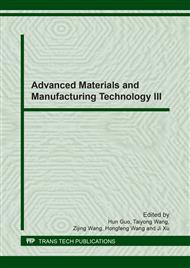p.174
p.184
p.194
p.201
p.210
p.219
p.225
p.235
p.245
Effect of Ultrasonic Vibration Assisted Grinding Process on Surface Topography and Properties of C/SiC Composite
Abstract:
This paper study on the influence of ultrasonic vibration assisted grinding (UAG) process on surface topography and properties of C/SiC composites. Through the surface quality experiments of common grinding (CG) and UAG, the height distribution parameters and function parameters are obtained and used to analyze the characteristics of the material surface topography. The relationship between grinding process and the composites surface quality is pointed out by experimental research. The orthogonal design is employed to optimize ultrasonic parameters and grinding parameters. The optimized condition is carried out to modify the surface quality. The results show that ultrasonic vibration has a great influence on height and surface bearing properties; the surface roughness is improved by the small vibration amplitude and low frequency. The grinding depth is the key factor on surface topography modification and the feed rate is the second. According to the research, an important technical support is carried out to improve the surface performance of C/SiC composites.
Info:
Periodical:
Pages:
210-218
Citation:
Online since:
February 2018
Authors:
Price:
Сopyright:
© 2018 Trans Tech Publications Ltd. All Rights Reserved
Share:
Citation:


